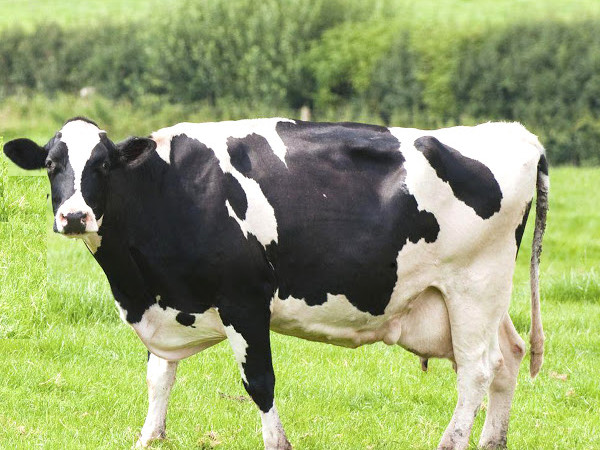

Dairy production is one of the fastest growing enterprises in Uganda. It is part of the 12 agricultural commodities which is considered by the line ministry of agriculture to have potential to remarkably contribute to increasing rural incomes and improving livelihoods, food and nutrition security.Although dairy doubles as a cash and food commodity, most of the milk produced is marketed using informal channels and consumed in unprocessed form.
As such there is a huge potential for large and small scale milk processing for purposes of taping into the export market.This is the thinking of scientists working with the Economic Policy Research Centre (EPRC) who carried out research to assess the dairy value chain in the country and gave recommendations as to how government can improve the sector along agro industrial development process to benefit communities across the country.
Dr Francis Mwesigye, a research fellow at EPRC, while giving overview of the research paper, explained that over the years Uganda’s dairy sector has registered impressive growth in total milk production.
Statistis
Citing the 2018 statistical figures by Food and Agriculture Organisation (FAO), Dr Mwesigye explains that between 2002 and 2016, milk output increased from 0.75 billion litres to 1.6 billion litres while the number of milking cows increased from 1,653,333 in 2002 to 3,749,033 in 2016.The milk yield per cow declined from 450 in 2002 to 415 litres in 2016
This is because the number of farmers keeping traditional cattle breeds giving low milk production increased.The 2015 Uganda Bureau of Statistics (Ubos) figures indicate that the livestock sector contributes nine per cent of Gross Domestic Product (GDP) and 17.3 per cent agricultural GDP. It is source of livelihoods to 4.5 million people.
FAO statistics indicate that the dairy sector contributes up to 50 per cent of animals, fetching $150 million in export earnings in 2018, making it the second agricultural export earner after coffee.These are in form of products which include skimmed milk and cream diary product, whey which is the liquid remaining after milk has been curdled and strained, butter, cheese and curd.
Performance
Dr Mwesigye and team in their research indicate that production of milk at farmer level is declining due to climate change challenges including prolonged drought. The indigenous cows in general do give milk yield rated at 3.5 litres per day but this has so far improved to 5.5 litres.
In the western region each indigenous cow produces 4.3 litres per day against 5.3 litres obtained from exotic cow breeds while in northern region indigenous cows produce 2.6 liters per day and in eastern the figure for indigenous cows is 3.8 litres against 3.5 litres from quality breeds. In the central region the figure is 3.4 against 6.3 litres from exotic cow breeds. The figure is high in central region because most farmers are practising zero grazing
The breed matters
A number of farmers in western Uganda are keeping Ankole breed which produce 3.3 litres per cattle per day, Nganda is mainly kept by farmers in the west and central part of the country and the milk production rate is 4.1 per litre per cow.The recommended dairy breeds are Ayrshire which is capable of producing 28.4 litres of milk per day, Guernsey breed produces 25 litres of milk per day, Holstein Friesian breeds produce 40 litres of milk per day and Jersey produces 22 liters per day.Dr Mwesigye advises farmers to access these breeds from the National Animal Genetic Resources Centre and Data bank (NAGRIC & DB) at Entebbe and its breeding centres across the country as well as National Agricultural Research Organisation (Naro) animal research institutes.Feeding and mating
Dr Mwesigye and team during the research initiative discovered that there are 18 per cent of dairy farmers who are practising zero grazing and 35 per cent are keeping exotic breeds in the 2015/2016 UBOS report and advised more farmers to come on board.They advise farmers to use controlled mating technology and have better practices of bull selection and keep them off from cows to avoid unnecessary pregnancies. The figure for 2015/2016 shows two per cent of farmers are practising the above methods.The scientists encourage farmers to adopt artificial insemination mechanism for production of quality dairy cows and zero grazing is encouraged as good feeding practice.Other interventions include farmers processing forage and hay and conserving them for dry season, availability of funds for milk cooperative centres with diversified groups as well as udder health which is important during milking.
Disease control
Also vaccinating the animals promptly and frequent deworming to avoid disease outbreaks can increase milk production. It is also important to use the recommended acaricides and make required mixtures for spraying the animals against ticks.The scientists cautioned farmers about mixing three different types of acaricides in wrong quantities and frequent spraying which is causing tick resistance.
Daily Monitor
 Contact Jaguza Support
Contact Jaguza Support